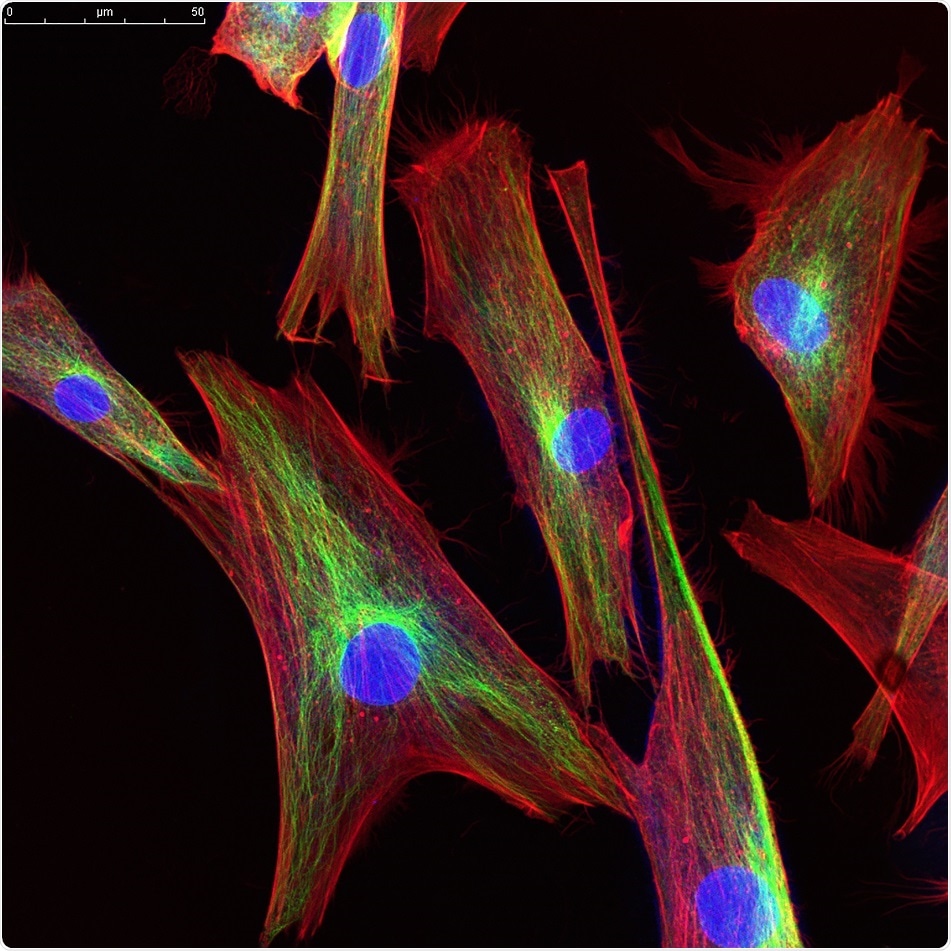Researchers have found out how long pieces of RNA called “long non-coding RNAs” (LncRNAs) work in skin cells to modulate connective tissue proteins such as collagen, potentially laying the foundations for new skin repair therapies.

Credit: Vshivkova/ Shutterstock.com
LncRNAs are a newly discovered class of genes that Ahmad Khalil (Case Western Reserve University School of Medicine) and colleagues have been investigating because the genes appear to be crucial to human health.
The team identified 111 LncRNAs that regulate the genes and behaviour of skin cells in mice. The LncRNAs work in conjunction with a highly conserved protein network called the Wnt/β-catenin pathway, a signaling hub known to enable animal cells to modify gene expression in response to the surrounding environment.
Our findings show that the Wnt/β-catenin pathway activates certain LncRNAs to directly control gene expression in skin fibroblast cells,"
Ahmad Khalil, Case Western Reserve University
The skin cells the team studied are called dermal fibroblasts, cells that aid the development of hair follicles, the healing of wounds and maintenance of the skin’s structural integrity. Fibroblasts fulfil these roles by working in conjunction with certain signaling pathways, including the Wnt/β-catenin pathway.
Sustained activation of this pathway can trigger fibroblasts to produce an excess of connective tissue proteins, which can cause an unhealthy thickening and scarring (fibrosis) of the skin.
What Khalil and his team have found is that LncRNAs act as an intermediary between the Wnt/β-catenin and fibroblast genes. When fibroblasts were genetically modified to overproduce β-catenin, they had up to 14 times greater levels of two particular LncRNAs, compared with control fibroblasts.
The increased levels of LncRNAs correlated with increased levels of proteins that aid the movement and contraction of fibroblasts. The study suggests that disruption of LncRNA levels could alter the way that fibroblasts behave and function in the skin.
Researchers are intrigued over the potential LncRNAs could hold as therapeutic targets since recent studies have shown LncRNAs defects in various diseases including cancer. The current study adds to the growing body of evidence that these genes could represent novel therapeutic targets for drug developers.
Co-author Radhika Atit, also from Case Western, says specific LncRNAs that operate downstream of the Wnt/β-catenin pathway could serve as drug targets for chronic and acute skin fibrosis conditions.
Khalil and team are now investigating the function of LncRNAs in different animal models to see how their disruption may influence disease.